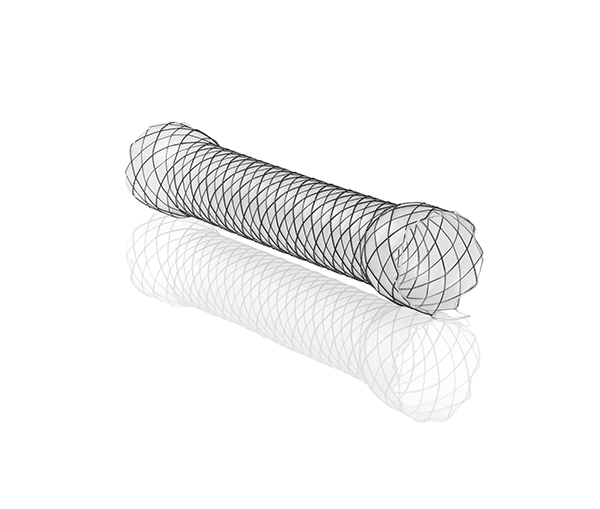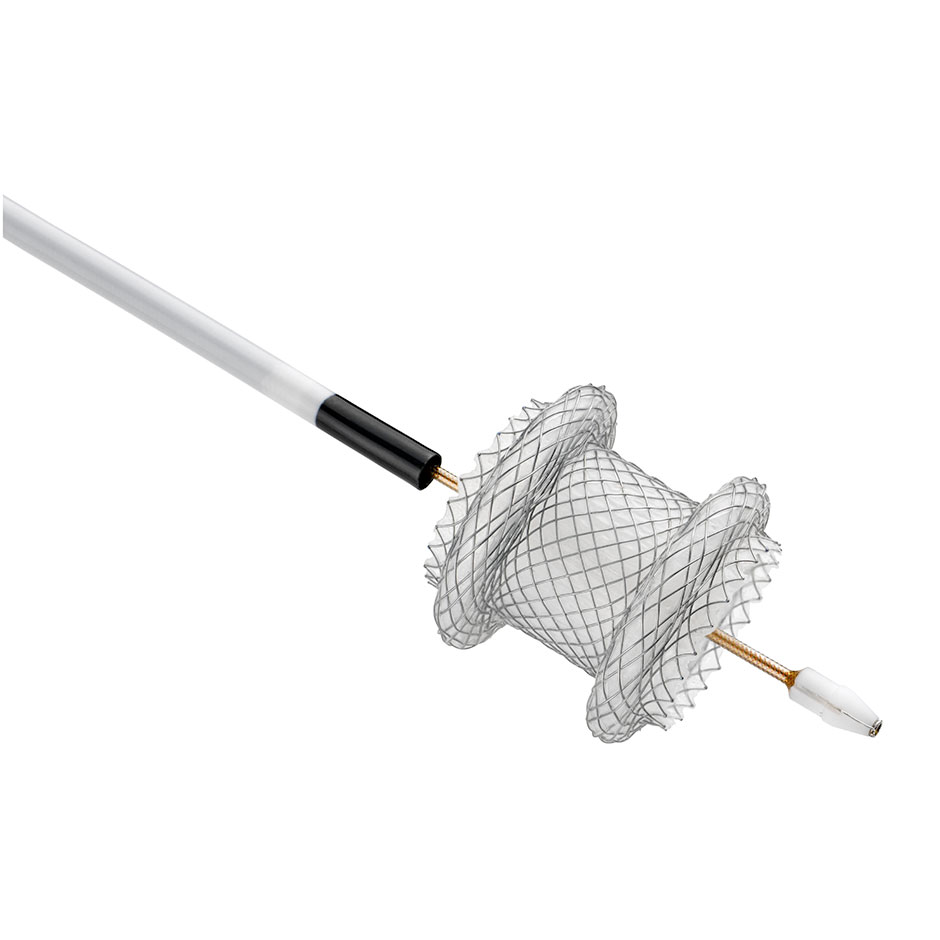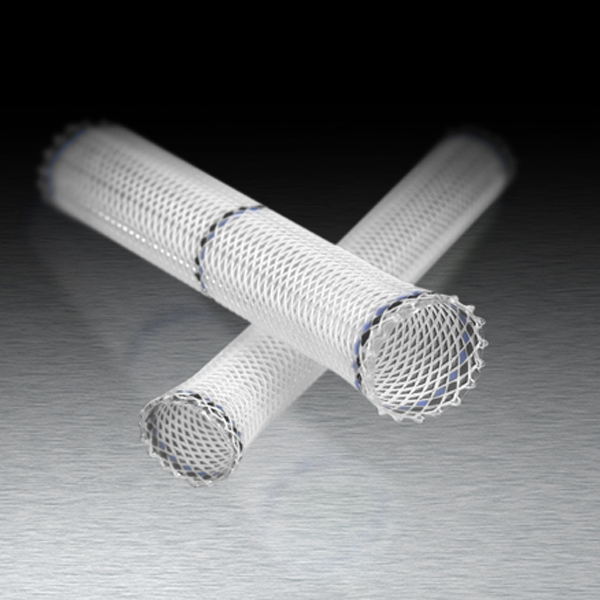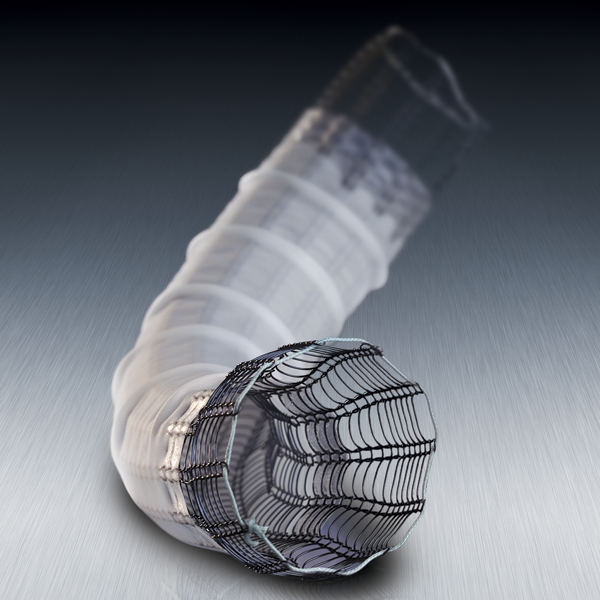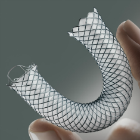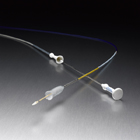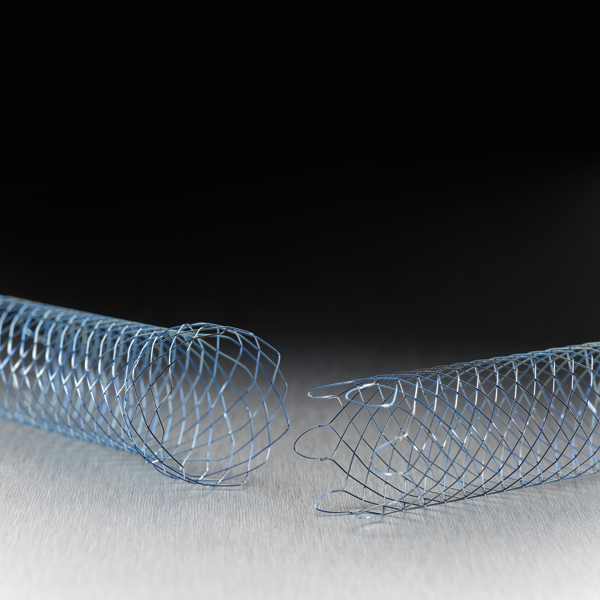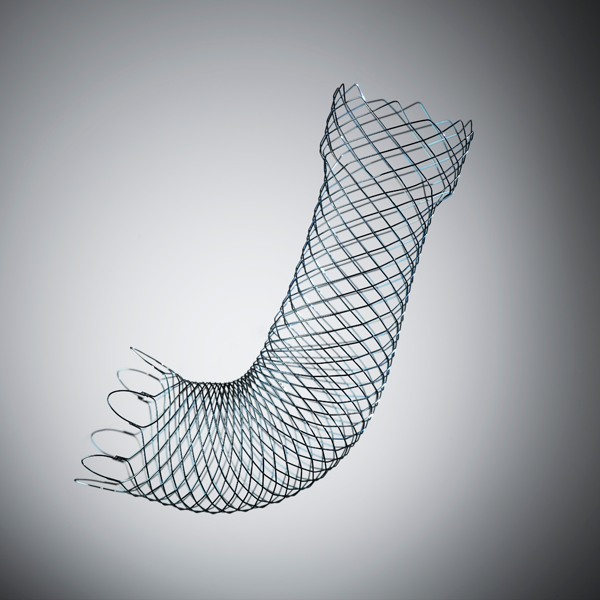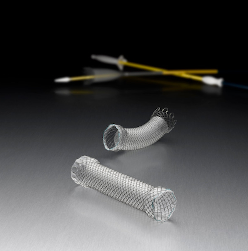Stents: Gastrointestinal
All Specialties (-)
-
Advanix™ Biliary Stent with NaviFlex™ RX Delivery System
The Advanix Biliary Stent with NaviFlex RX Delivery System is designed to maximize flow rates, improve pushability through tortuous anatomy, and be repositionable to aid in accurate placement.
- Gastroenterology
-
Agile™ Esophageal Fully & Partially Covered Stent System
The Agile Esophageal Stent System, featuring a through-the-scope delivery system, is intended for:
• Fully Covered RMV: Maintaining esophageal luminal patency in esophageal strictures caused by intrinsic and/or extrinsic malignant tumors, occlusion of concurrent esophageal fistulas and treating refractory benign esophageal strictures.
• Partially Covered: Maintaining esophageal luminal patency in esophageal strictures caused by intrinsic and/or extrinsic malignant tumours, and occlusion of concurrent esophageal fistulas.- Endoscopy
- Gastroenterology
-
Hot AXIOS™ Stent and Electrocautery-Enhanced Delivery System
The Hot AXIOS Stent and Electrocautery- Enhanced Delivery System indicated for use to facilitate transgastric or transduodenal endoscopic drainage of:
• a pancreatic pseudocyst or a walled-off necrosis with ≥ 70% fluid content
• gallbladder in patients with acute cholecystitis who are at high risk or unsuitable for surgery
• the bile duct after failed ERCP in patients with biliary obstruction due to a malignant stricture- Gastroenterology
-
Polyflex™ Esophageal Stent
The Polyflex Stent is designed to treat refractory benign strictures and/or malignant esophageal strictures and concurrent tracheosophageal fistulas.
- Gastroenterology
-
Ultraflex™ Esophageal NG Stent System
The Ultraflex Esophageal Stent System maintains luminal patency in esophageal strictures caused by intrinsic or extrinsic malignant tumors. The covered stent can also be used for occlusion of concurrent esophageal fistula.
- Gastroenterology
-
WallFlex™ Biliary Transhepatic Stent System
The most frequently implanted biliary metal stent throughout the U.S., Canada and Europe – is available with a transhepatic delivery system designed specifically to meet the needs of IRs. This third generation stent platform from BSC was built on clinical evidence and industry-leading innovation and is available in fully covered, partially covered and uncovered options for the palliative treatment of biliary strictures produced by malignant neoplasms. The fully covered stent is also approved for the treatment of benign biliary strictures.
- Interventional Oncology
-
WallFlex™ Biliary RX Stent (including Benign Indication)
Two decades of metal stent development and demonstrated safety and effectiveness from multiple studies have helped make WallFlex Biliary Stents the most frequently implanted biliary metal stent throughout the U.S., Canada, and Europe.1
- Gastroenterology
-
WallFlex™ Colonic Stents
WallFlex™ Colonic Stent
Designed to offer the ultimate combination of delivery system access and stent construction to expand options available for patient treatment and management of colonic strictures caused by malignant neoplasms.
WallFlex™ Colonic Soft Stent
New 9F sized Delivery System for use in a 3.2mm channel scope. Bench tests demonstrate that WallFlex Soft Enteral has lower radial force than current WallFlex Enteral.1
- Gastroenterology
-
WallFlex™ Duodenal Stent
WallFlex™ Duodenal Stent
Indicated for the palliative treatment of gastroduodenal obstructions produced by malignant neoplasms.
WallFlex™ Duodenal Soft Stent
New 9F sized Delivery System for use in a 3.2mm channel scope. Bench tests demonstrate that WallFlex Soft Enteral has lower radial force than current WallFlex Enteral.1
- Gastroenterology
-
WallFlex™ Esophageal Stents (including Benign Indication)
Boston Scientific stent technology is built on science and innovation to expand options available for patient treatment and management.
- Gastroenterology

















